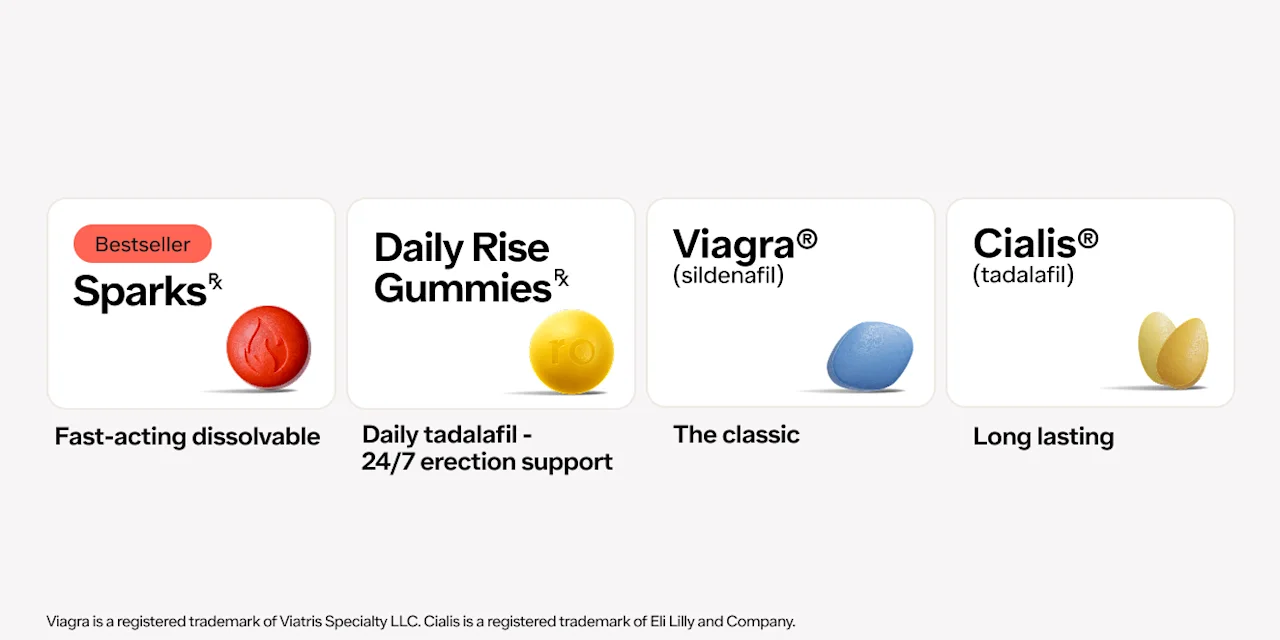Key takeaways
The Priapus Shot claims to boost cell growth and blood flow into the penis, leading to stronger erections in men with erectile dysfunction and other urologic conditions.
While some small studies have found that P-Shots can improve erections, others have found that the improvement is on par with a placebo. More research still needs to be done.
Here's what we'll cover
Here's what we'll cover
Key takeaways
The Priapus Shot claims to boost cell growth and blood flow into the penis, leading to stronger erections in men with erectile dysfunction and other urologic conditions.
While some small studies have found that P-Shots can improve erections, others have found that the improvement is on par with a placebo. More research still needs to be done.
Erectile dysfunction (ED) treatments range from lifestyle changes like cutting out tobacco and drinking less alcohol to prescription medications like Viagra or Cialis.
What about using a needle to inject platelet-rich plasma from your own blood to improve your erections? The Priapus Shot, or P-Shot for short, does just that. The premise of the Priapus Shot is that your own body already contains substances that can give you bigger, harder erections.
For people who find current treatments ineffective for treating their ED, the potential P-shot benefits may be worth considering. But what substances are in this treatment, exactly, and how does the P-Shot work? Read on as we answer that question and more.
What is the Priapus Shot (P-Shot)?
The Priapus Shot, or P-Shot, is a procedure designed to boost cell growth and blood flow in the penis. The goal of the procedure is to improve erectile function in men with ED. It can also be used in other urologic conditions such as Peyronie’s disease (a condition which causes the penis to bend, resulting in pain and difficulty getting an erection) and lichen sclerosus (which can result in immune-mediated damage to the penis). During a P-shot procedure, a healthcare provider injects platelet-rich plasma (extracted from your own blood) into your penis (after the area has been numbed, of course).
Invented by Dr. Charles Runels, the P-Shot is named after Priapus, the Greek god of fertility and male genitalia. In paintings, Priapus is usually pictured with an oversized erection. While P-Shots won’t turn you into an overly endowed Greek god, they might be able to enhance your sexual wellness and give you larger, firmer erections. The Priapus Shot is based on the idea that specific components of your blood—plasma—can heal your body’s tissues.
This might sound like science fiction, but there’s actual science behind it. Bone and joint doctors have been using patients’ blood to heal injuries since the ‘80s, and since then, healing with blood components has played a role in plastic surgery, oral surgery, dermatology, sports medicine, and more.
While platelet-rich plasma treatment may be used for a variety of conditions, the P-Shot is specifically used for conditions affecting erectile function, including:
Erectile dysfunction (ED)
Peyronie’s disease (PD)
Stress urinary incontinence (SUI)
More generally, PRP therapy has been used in the fields of dermatology, plastic surgery, cardiac surgery, and sports medicine. PRP may help with:
Heal wounds and sports injuries
Improve the appearance of scars from burns, acne, or surgery
Promote hair growth in people with hair loss
Rejuvenate skin
Regenerate tissue
Does the P-shot work?
So what can this PRP-packed Priapus shot really do? Here are some of the potential benefits and the scientific evidence to back them up. Although, it’s worth noting that these are small studies and researchers still need to do more research to verify the benefits of P-Shots for the treatment of ED and Peyronie’s disease (PD).
A few studies have found that PRP can improve median IIEF scores by over 4 points. IIEF stands for International Index of Erectile Function, and is the standard tool used by the medical community to measure the severity of erectile dysfunction. It operates on a 30-point scale, with 0–10 being severe ED and 26–30 being not concerning for ED. Depending on where you’re at on the scale to begin with, an improvement of 4+ could be the equivalent of moving from moderate to mild-moderate ED.
However, results may vary. Other studies have found that the P-Shot only increased the average IIEF score by 2 points, and that most men still had ED in the mild to moderate range after the procedure.
In another small study, 60 men with mild to moderate ED were placed in two groups: one who received 2 P-shot sessions a month apart, and one who received a placebo injection. The men who received the P-Shot were more satisfied with their treatment, and 69% (funnily enough) experienced a clinically significant improvement in their erections at a 6-month followup. However, 27% of the placebo group also experienced a similar improvement in their erections, meaning there may be a significant component of placebo effect.
In other small studies, men have also reported increased confidence and sexual satisfaction after P-Shots.
The reality is that P-shots are still considered a very new treatment, and it’s important that more research is done before it becomes clear whether the P-shot can treat ED.
How does the P-Shot work?
The P-Shot procedure involves injecting blood directly into the tissue of the penis. The shot only uses specific components of your blood. You’ve probably heard of red and white blood cells, but these only make up a portion of what you have in your blood vessels. The blood cells in your body float in a liquid called plasma. Plasma is full of powerful substances like proteins that can help with clotting blood, antibodies to fight infection, and growth factors for new tissue growth and healing.
The shot is made by separating plasma from the rest of your blood components and spinning it down to identify the portion with a larger amount of platelets, which are small pieces of cells that float around in your blood and participate in forming blood clots. This powerful platelet-rich plasma (PRP) is injected into the shaft of the penis. If that sounds painful, don’t worry—a numbing cream is applied to the penis before the shot is administered.
The idea behind P-Shots is based on how an erection works. An erection happens when blood flow into the penis increases and blood flow out of the penis decreases, causing the penis to be engorged with blood. So, the thinking goes, treatments that increase blood flow to the penis should also improve erectile function. Dr. Runels claims that the Priapus Shot not only increases penile blood flow, but also helps promote the formation of healthier penile tissue - all while using components from a person’s own blood.
Risks and side effects of the P-Shot
There’s a lot of hype around the P-Shot and its purported benefits. But, what are the risks?
The main risk to be aware of with the P-Shot is simply that it might not work. It’s still relatively new, understudied, and lacking a decent amount of evidence for its safety and efficacy. Given that there are only some small studies and anecdotal reports, many researchers warn that there is still not enough evidence to justify P-Shots being used as a standard treatment for ED. Moreover, some studies have found that the results are no different than a placebo.
However, the research done to date does suggest that the procedure is safe and the majority of patients report no serious side effects. Typically, P-Shot side effects are minor, and may include:
Mild pain
Bruising
Hematomas
Discoloration
A brief drop in blood pressure following the procedure
How much does the P-Shot cost?
According to a 2022 survey of 90 clinics offering the procedure, the average cost of a P-shot procedure for erectile dysfunction is $1,507. However, the cost can vary depending on where you live and the provider you choose and could be up to $2,500.
Because these procedures are considered cosmetic, P-Shots may not be covered by health insurance.
What to expect during a P-Shot appointment
P-shots are outpatient procedures, so you can go home once it's done (as soon as your provider says you’re good to go). A healthcare provider may first apply a numbing cream and local anesthetic to the genital area. They then draw a blood sample, which is processed in a centrifuge to extract platelet-rich plasma (PRP). The PRP is injected into the penis, and the patient is monitored for about 30 minutes post-procedure for potential complications or side effects.
When should you see results from a P-Shot
When you see results from a P-shot can vary depending on the underlying conditions affecting your erectile function, and the number of treatments you receive. Some people need to get multiple P-Shot treatments to see results, usually at least two. Others, according to Dr. Runels, may see results the same day, though results may fluctuate as the body gets accustomed to the treatment.
Alternatives to the P-Shot
The most common way to treat ED is with PDE5 inhibitors. These drugs are better known by their brand names, namely Viagra (sildenafil) and Cialis (tadalafil). Depending on the drug, these powerful little pills can start working in as little as 30 minutes to an hour, and keep working for several hours (in the case of Viagra) or for nearly a whole weekend (in the case of Cialis). Other PDE5 inhibitors include Levitra (vardenafil), Stendra (avanafil), and combination formulations like Ro Sparks (which combines sildenafil and tadalafil in a dissolvable lozenge).
Other treatments for ED can depend on the underlying cause. If depression, stress, or anxiety is messing with your erections, talking to a therapist can provide relief. Lifestyle changes—including improving your diet, increasing your physical activity, and stopping smoking—can also improve ED. Physical conditions like obesity, diabetes, heart disease, and others can also contribute to or worsen ED, so it’s important to get those addressed.
Bottom line on the P-Shot
The Priapus shot might sound like a magical solution, especially if other forms of treatment haven’t worked for you. But there simply isn’t enough research out to start hailing it as a new miracle treatment for ED. If you’re wondering if it might be a good option for you, talk to your healthcare provider. If you are having doubts, you can also talk to a different person than the actual P-Shot provider, to ensure a lack of bias in their recommendation.
In the meantime, there are a number of proven P-Shot alternatives that can help you get on track to having harder erections, from lifestyle changes like improving your diet and exercise routine to ED medications like Viagra and Cialis. You can ask your healthcare provider about those options to see whether they might be right for you, as well.
DISCLAIMER
If you have any medical questions or concerns, please talk to your healthcare provider. The articles on Health Guide are underpinned by peer-reviewed research and information drawn from medical societies and governmental agencies. However, they are not a substitute for professional medical advice, diagnosis, or treatment.
Viagra Important Safety Information: Read more about serious warnings and safety info.
Cialis Important Safety Information: Read more about serious warnings and safety info.
Alkandari, M. H., Touma, N., & Carrier, S. (2021). Platelet-Rich Plasma Injections for Erectile Dysfunction and Peyronie's Disease: A Systematic Review of Evidence. Sexual Medicine Reviews. Advance online publication. doi:10.1016/j.sxmr.2020.12.004. Retrieved from https://pubmed.ncbi.nlm.nih.gov/34219010/
Alves, R. & Grimalt, R. (2018). A Review of Platelet-Rich Plasma: History, Biology, Mechanism of Action, and Classification. Skin Appendage Disorders, 4(1), 18–24. doi:10.1159/000477353. Retrieved from https://www.ncbi.nlm.nih.gov/pmc/articles/PMC5806188/
Anastasiadis, E., Ahmed, R., Khoja, A. K., et al. (2022). Erectile dysfunction: Is platelet-rich plasma the new frontier for treatment in patients with erectile dysfunction? A review of the existing evidence. Frontiers in Reproductive Health, 4, 944765. doi:10.3389/frph.2022.944765. Retrieved from https://www.ncbi.nlm.nih.gov/pmc/articles/PMC9580815/
Dhurat, R. & Sukesh, M. (2014). Principles and Methods of Preparation of Platelet-Rich Plasma: A Review and Author's Perspective. Journal of Cutaneous and Aesthetic Surgery, 7(4), 189–197. doi:10.4103/0974-2077.150734. Retrieved from https://www.ncbi.nlm.nih.gov/pmc/articles/PMC4338460/
Epifanova, M. V., Gvasalia, B. R., Durashov, M. A., et al. (2020). Platelet-Rich Plasma Therapy for Male Sexual Dysfunction: Myth or Reality?. Sexual Medicine Reviews, 8(1), 106–113. doi:10.1016/j.sxmr.2019.02.002. Retrieved from https://pubmed.ncbi.nlm.nih.gov/30898594/
Israeli, J. M., Lokeshwar, S. D., Efimenko, I. V., et al. (2022). The potential of platelet-rich plasma injections and stem cell therapy for penile rejuvenation. International Journal of Impotence Research, 34(4), 375–382. doi:10.1038/s41443-021-00482-z. Retrieved from https://www.ncbi.nlm.nih.gov/pmc/articles/PMC9072597/
Krzastek, S. C., Bopp, J., Smith, R. P., et al. (2019). Recent advances in the understanding and management of erectile dysfunction. F1000Research, 8, F1000 Faculty Rev-102. doi:10.12688/f1000research.16576.1. Retrieved from https://www.ncbi.nlm.nih.gov/pmc/articles/PMC6348436/
Masterson, T. A., Molina, M., Ledesma, B., et al. (2023). Platelet-rich Plasma for the Treatment of Erectile Dysfunction: A Prospective, Randomized, Double-blind, Placebo-controlled Clinical Trial. The Journal of Urology, 210(1), 154–161. doi:10.1097/JU.0000000000003481. Retrieved from https://pubmed.ncbi.nlm.nih.gov/37120727/
Matz, E. L., Pearlman, A. M., & Terlecki, R. P. (2018). Safety and feasibility of platelet rich fibrin matrix injections for treatment of common urologic conditions. Investigative and Clinical Urology, 59(1), 61–65. doi:10.4111/icu.2018.59.1.61. Retrieved from https://www.ncbi.nlm.nih.gov/pmc/articles/PMC5754585/
Notsek, M. & Boiko, M. (2019). PO-01-083 Platelet-rich plasma therapy of Peyronie’s disease. The Journal of Sexual Medicine, 16(5), S70. doi:10.1016/j.jsxm.2019.03.225. Retrieved from https://academic.oup.com/jsm/article-abstract/16/Supplement_2/S70/7020341
Panchatsharam, P. K., Durland, J., & Zito, P. M. (2023). Physiology, Erection. StatPearls. Retrieved Jun. 21, 2024 from https://www.ncbi.nlm.nih.gov/books/NBK513278/
Poulios, E., Mykoniatis, I., Pyrgidis, N., et al. (2021). Platelet-Rich Plasma (PRP) Improves Erectile Function: A Double-Blind, Randomized, Placebo-Controlled Clinical Trial. The Journal of Sexual Medicine, 18(5), 926–935. doi:10.1016/j.jsxm.2021.03.008. Retrieved from https://pubmed.ncbi.nlm.nih.gov/33906807/
Raheem, O. A., Natale, C., Dick, B., et al. (2021). Novel Treatments of Erectile Dysfunction: Review of the Current Literature. Sexual Medicine Reviews, 9(1), 123–132. doi:10.1016/j.sxmr.2020.03.005. Retrieved from https://pubmed.ncbi.nlm.nih.gov/32631812/
Runels, C. (2021). Priapus Shot® | P-Shot® | Official Website | Priapus Toxin™. Retrieved Jun. 20, 2024 from https://priapusshot.com/
Scott, S., Roberts, M., & Chung, E. (2019). Platelet-Rich Plasma and Treatment of Erectile Dysfunction: Critical Review of Literature and Global Trends in Platelet-Rich Plasma Clinics. Sexual Medicine Reviews, 7(2), 306–312. doi:10.1016/j.sxmr.2018.12.006. Retrieved from https://pubmed.ncbi.nlm.nih.gov/30833169/
Shahinyan, G. K., Weinberger, J. M., Shahinyan, R. H., et al. (2022). Analysis of Direct-to-Consumer Marketing of Platelet-Rich Plasma for Erectile Dysfunction in the US. JAMA Network Open, 5(5), e2214187. doi:10.1001/jamanetworkopen.2022.14187. Retrieved from https://www.ncbi.nlm.nih.gov/pmc/articles/PMC9136622/
Taş, T., Çakıroğlu, B., Arda, E., et al. (2021). Early Clinical Results of the Tolerability, Safety, and Efficacy of Autologous Platelet-Rich Plasma Administration in Erectile Dysfunction. Sexual Medicine, 9(2), 100313. doi:10.1016/j.esxm.2020.100313. Retrieved from https://www.ncbi.nlm.nih.gov/pmc/articles/PMC8072172/
Virag, R., Sussman, H., Lambion, S., et al. (2017). Evaluation of the benefit of using a combination of autologous platelet rich-plasma and hyaluronic acid for the treatment of Peyronie’s disease. Sexual Health Issues, 1(1), 1-8. doi:10.15761/SHI.1000102. Retrieved from https://www.oatext.com/evaluation-of-the-benefit-of-using-a-combination-of-autologous-platelet-rich-plasma-and-hyaluronic-acid-for-the-treatment-of-Peyronies-disease
Zafar, A. (2017). Sports hype of platelet-rich plasma 'powerful marketing tool' but distorts the science. CBC News. Retrieved from https://www.cbc.ca/news/health/prp-athletes-media-1.4246254












